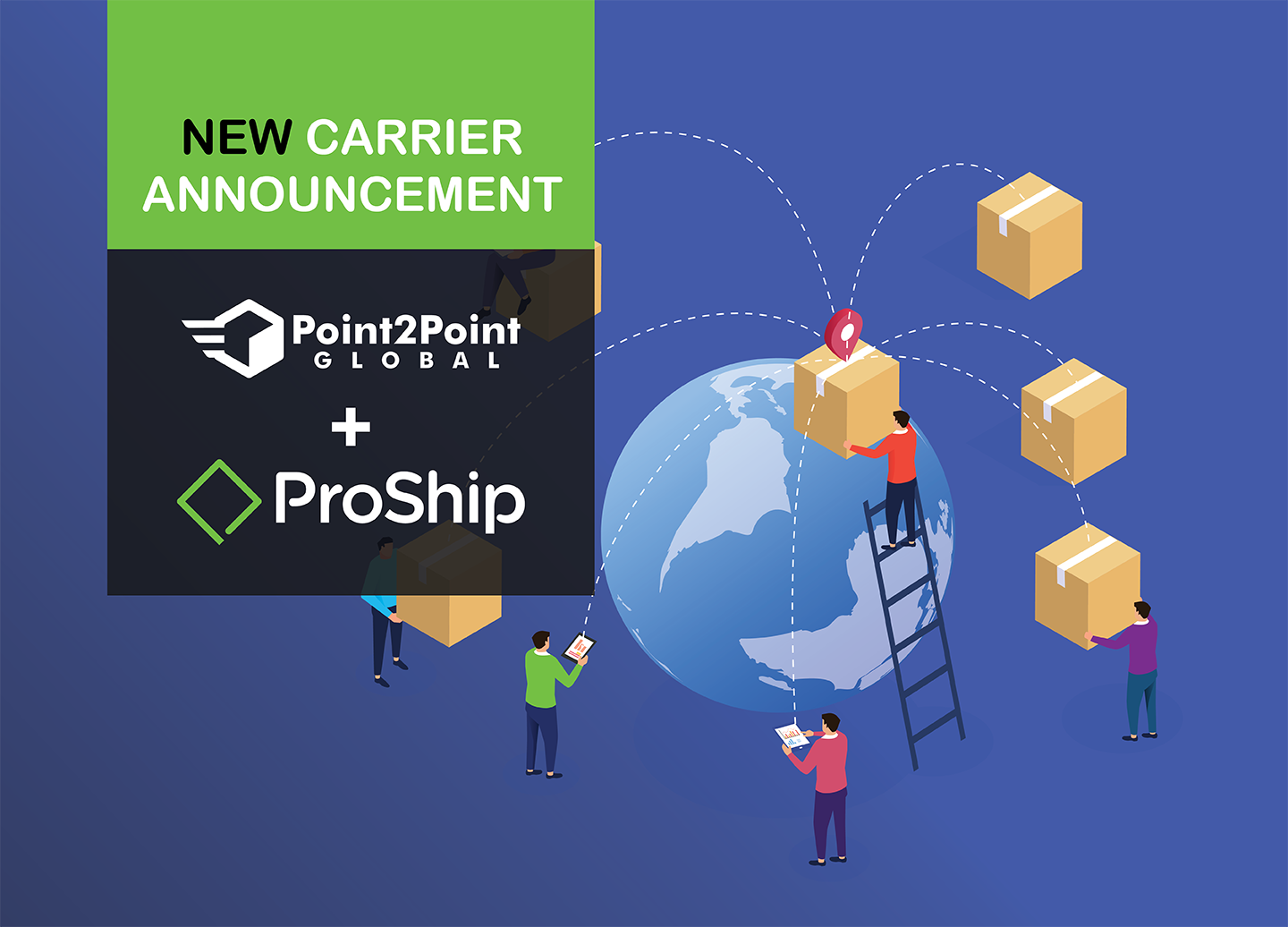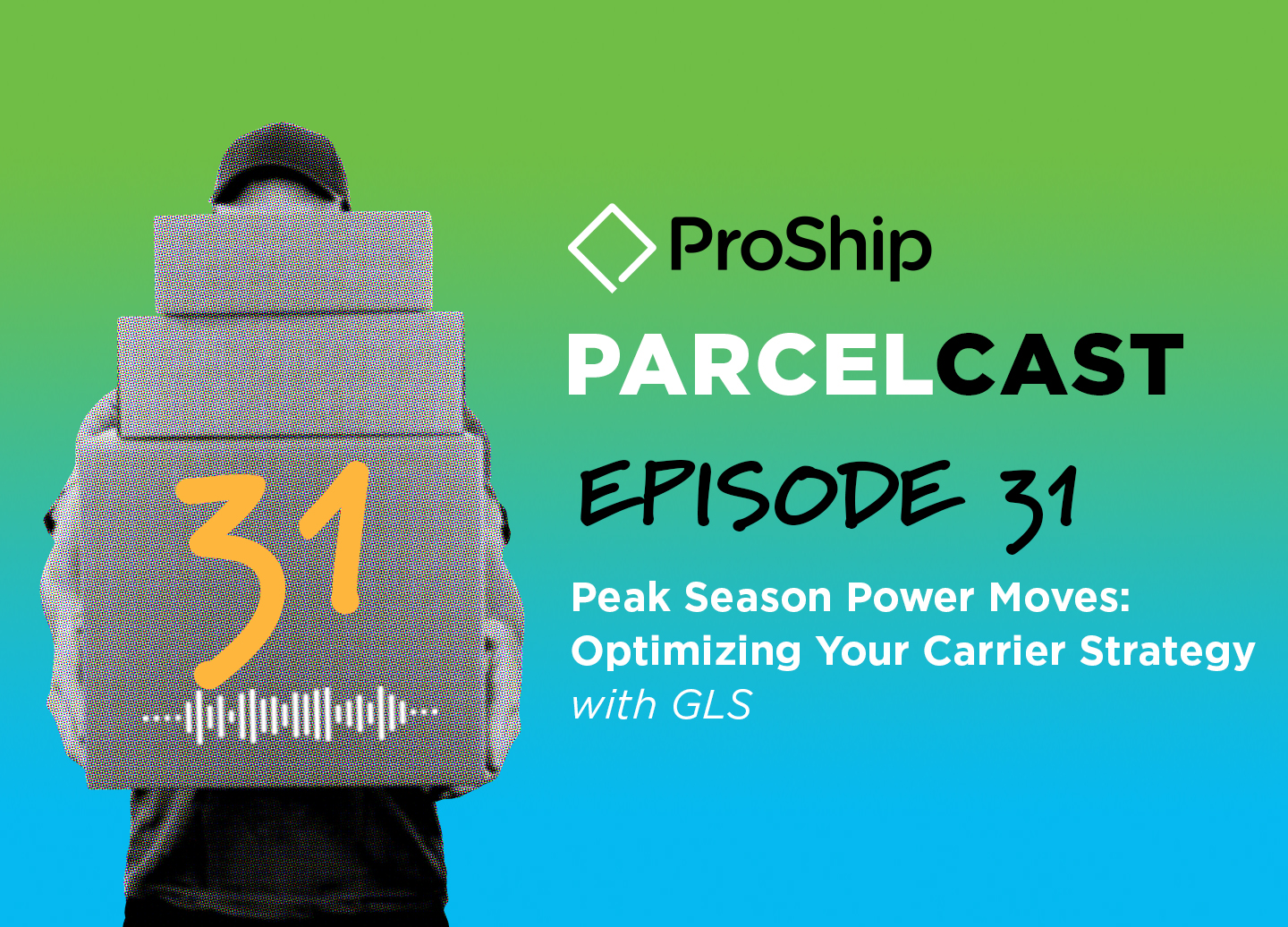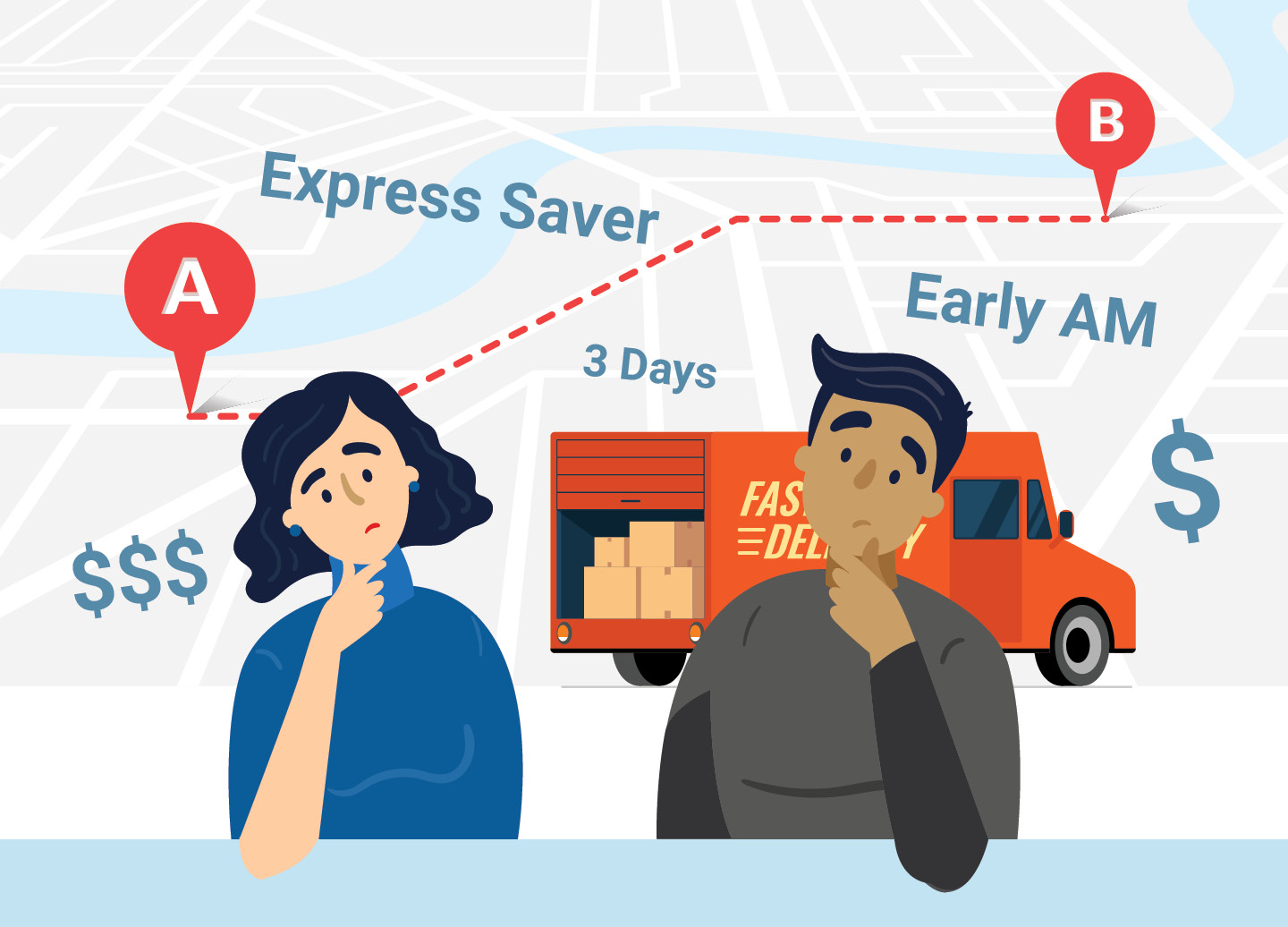Discover how to master demand surcharges from the carriers
Let’s talk about the single biggest tax on your holiday business: peak season / demand surcharges. Every year, parcel carriers raise fees to handle the holiday rush, leaving shippers to absorb the added costs.
This isn’t just a seasonal inconvenience. It’s a strategic challenge to your business, one that can erode your margins and sabotage your hard-earned customer loyalty if handled incorrectly.
Keep reading as we break down exactly what’s happening with demand surcharges. We’ll expose the real cost of these fees and, most importantly, show you how to take back control of your shipping strategy to turn these fees from a business tax into a competitive advantage.
The Uncensored Truth About Surcharges
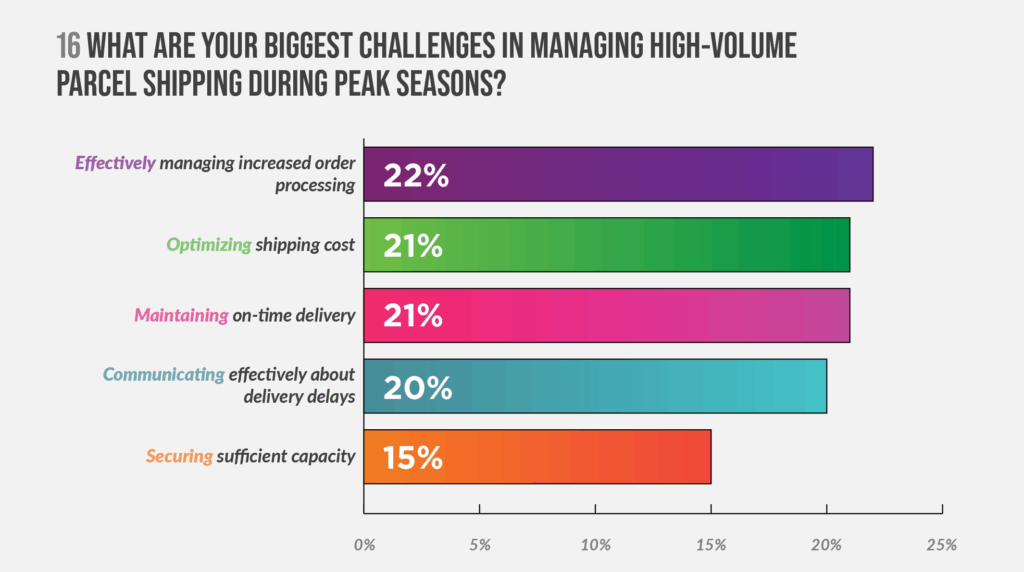
Peak season surcharges, now called demand surcharges, are a direct response to a fundamental problem of supply and demand. Carriers are increasingly using the term “demand surcharge” to reflect that these fees are not just for the holiday season but can be applied any time their network capacity is strained. This subtle shift in language gives them the flexibility to implement these surcharges based on volume spikes, regardless of the time of year.
Every November and December, the volume of parcels skyrockets, but a carrier’s physical infrastructure, like planes, trucks, and sorting facilities, remains fixed.
To manage this massive spike, carriers are forced to spend more on things like extra shifts, temporary staff, and expedited logistics. The surcharges are designed to offset these operational costs and, in many cases, to manage demand by making certain types of shipping less profitable.
So, what are we really talking about? The fees go far beyond a simple seasonal rate hike. They are a complex and often unpredictable collection of costs that hit your bottom line when you least expect it.
A Closer Look at Carrier Surcharges
The name of the fee is just the beginning. The real complexity lies in how and when each carrier applies its unique surcharges. Here is a breakdown of the specific strategies from the industry’s major players:
UPS: UPS has fully embraced the term “Demand Surcharge.” They use a multi-tiered approach that includes a “peak-within-peak” surcharge period, where fees become significantly higher during the busiest weeks of the season. For high-volume customers, their fees are often tied to weekly volume, meaning a sudden spike in a given week can trigger a much higher per-package surcharge across all of that week’s shipments. [See the UPS release details]

Fuel surcharges, which are often overlooked, are a separate and frequently changing cost that adds to the total. This graphic shows how UPS has increased its fuel surcharge tables 7+ times in a little over a year, demonstrating the constant volatility of these fees. Data courtesy of Reveel Group.
FedEx: FedEx’s strategy is similar, but with its own set of unique rules. They apply various Demand Surcharges on services ranging from Additional Handling to Oversize packages. Critically for high-volume enterprise shippers, their Residential Delivery Charge for contract customers is calculated dynamically each week based on shipping volume, which can make forecasting costs a major challenge. [See the FedEx release details]
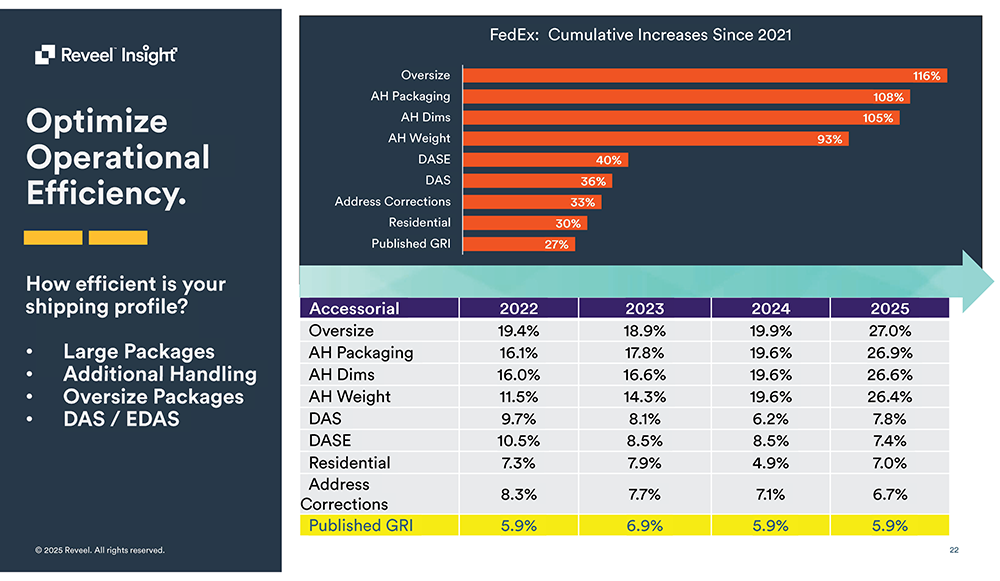
While FedEx publishes a General Rate Increase (GRI), this only tells part of the story. This graphic shows the staggering cumulative increases of these individual accessorial surcharges, with some fees like Oversize and Additional Handling rising more than 100% since 2021. Data courtesy of Reveel Group.
USPS: The United States Postal Service takes a different approach. Rather than a “surcharge,” it implements a temporary price change for the peak holiday season. These price adjustments are based on factors like service type (Priority Mail, Ground Advantage), package weight, and delivery zone. This model is often less volatile than the volume-based surcharges from private carriers, but the price increases can still be substantial, especially for heavier or longer-distance packages. [See the USPS release details]
OnTrac (and Other Regionals): Regional carriers like OnTrac often have a distinct strategy. Unlike the dynamic pricing models of UPS and FedEx, OnTrac applies a single, flat fee for services like residential delivery that remains consistent throughout the peak period. This predictability can be a key differentiator, but shippers must still be aware of new fees, like the recently introduced Demand – Over Maximum Limits surcharge, which mirrors similar fees from the national carriers. [See the OnTrac release details]
The Math You Need to Do
Understanding each carrier’s strategy is the first step. The second is to apply it to your own shipping profile. The goal is to perform a deep-dive analysis on your own data to understand the true impact of these fees.
This means asking questions like:
- Which of your package types consistently triggers additional handling or large package surcharges?
- How much of your volume is being sent to residential addresses, and how much is being affected by volume-based fees?
- If you were to shift even 10% of your volume to a different carrier, what would the cost savings be?
The Problem Beyond the Price Tag
The financial hit from demand surcharges is only half the story. As a supply chain professional, you know that the real cost is often far more subtle and destructive. Unpredictable fees and shifting carrier rules create a ripple effect that damages your bottom line.
Forecasting and Budgeting Become Impossible
Carrier surcharges can change with little notice, making it nearly impossible to accurately forecast your transportation spend for the most critical quarter of the year. Your team spends hours trying to reconcile invoices and adjust budgets that are already a moving target.
Operational Strain
When a carrier’s pricing strategy is complex and hard to understand, your operations team can’t make fast, data-driven decisions. They may be forced to choose a less-optimal carrier simply to avoid a surprise fee, which can impact delivery times and service levels.
Customer Experience Erosion
If these fees force you to pass higher shipping costs to your customers, it can directly damage brand loyalty. In a world where free or low-cost shipping is the standard, a surprise fee at checkout can lead to abandoned carts and lost business. Your customer service team is left to deal with the fallout.
This is where the real risk lies. The moment you lose control of your shipping costs, you lose control of your strategy, your operations, and your customer experience.
The Multi-Carrier Shipping Software Advantage
The complexities of carrier surcharges, demand pricing, and shifting service levels are too much for spreadsheets or manual systems. A robust multi-carrier shipping software platform is the only way to transform your shipping operation from a reactive cost center into a strategic asset.
Think of it as your primary defense against unexpected fees. Here is how the right modern shipping technology protects you from the hidden costs of peak season:
- Real-Time Rate Shopping: A powerful shipping solution compares your contracted rates across all carriers, applying every single surcharge in real time. This means you know the true cost of every single shipment before the label is printed, eliminating surprises and margin erosion.
- Dynamic Carrier Selection: The shipping software automatically determines the optimal carrier and service for each package, based on your business rules [Learn more about how business rules enable rapid response in shipping]. If one carrier is applying a heavy surcharge for a particular zone or package type, the shipping platform can instantly reroute that package to a different carrier who offers a more cost-effective option. It can even be configured for advanced strategies like Carrier Volume Balancing to proactively manage your carrier spend and maximize savings.
- Actionable Visibility: Advanced multi-carrier shipping software gives you instant visibility into your shipping data. You can track your spend, analyze carrier performance, and monitor real-time trends in fees. This lets you make data-driven decisions at the moment of shipping, empowering your team to spot opportunities for savings.
How ProShip Delivers on the Promise of Multi-Carrier Software
For many successful high-volume enterprise shippers, that solution is ProShip. What makes this shipping platform different is its carrier options and the unmatched flexibility it provides. ProShip empowers you to turn your parcel shipping operation into a strategic asset with key differentiators that set it apart:
- A Truly Hybrid Approach: ProShip provides both on-platform and API carrier options, allowing you to build a powerful, resilient shipping network that is both fast and flexible. For example, you can leverage API calls for rating and rate shopping on your Ship-From-Store (SFS) orders and then use on-platform carrier engines for warehouse execution, processing thousands (if not more!) of shipments a day. This approach ensures your core operations maintain millisecond speed without sacrificing the flexibility to access unique carrier services when needed.
- Lightning-Fast Carrier Engines: ProShip’s on-platform carrier engines are the gold standard for high-volume environments like distribution centers and warehouses. They calculate rates in milliseconds because the rating logic is hosted locally, eliminating the latency and potential bottlenecks of external API calls. This is crucial for high-volume peak season time, when you can’t tolerate a delay. [Discover more about on-platform, API and hybrid approaches to your carriers]
- Versionless Architecture: In the world of parcel tech, mergers and acquisitions often mean forced, costly software upgrades and abandoned product roadmaps. A company that was a stable investment one day can become a financial risk the next. ProShip’s versionless architecture provides seamless, automatic updates without any downtime, protecting your business from the common industry pitfalls of acquisitions and product sunsets. This means you stay carrier compliant 24/7/365 without ever having to worry about a manual upgrade or the risks associated with an ownership change.
- Advanced Business Rules: The ProShip shipping solution allows you to build and manage complex business rules that automatically execute your strategy. You can tell the shipping solution exactly how to handle every single package, ensuring the right carrier is chosen for the right reason, every time.
- Seamless Integration: ProShip is designed to integrate seamlessly into your existing tech stack, including your warehouse management system (WMS), order management system (OMS), enterprise resource planning (ERP), and other parts of the enterprise software stack (ESS). This deep connectivity turns your logistics operations into a single, cohesive powerhouse.
ProShip turns a complex, reactive problem into a simple, efficient, and proactive process. View the Choice Brochure to discover all the ways ProShip offers the flexibility, customization, and control you need to not just survive peak season, but to thrive.
The Path to Profitability
Peak season surcharges are more than a line item on a bill. They are a complex challenge that erodes your margins and puts a strain on your entire shipping operation. Managing these fees manually is no longer a viable option for high-volume businesses. The key to not just surviving, but thriving during peak season, is to move beyond legacy systems and quick-fix solutions that lack a dedicated focus on parcel execution.
A truly powerful multi-carrier shipping software platform gives you the control you need to turn the demand surcharge challenge into an opportunity. By providing instant access to rates, offering dynamic carrier selection, and delivering real-time visibility, the right shipping software partner ensures you can keep your costs down and your customers happy.
Ready to take control of your shipping? This is the last shipping software you’ll ever need to master the challenges of e-commerce and supply chain management. Schedule a discovery call with ProShip today.


 Back to Blog
Back to Blog
